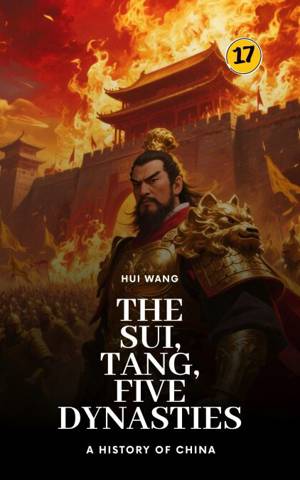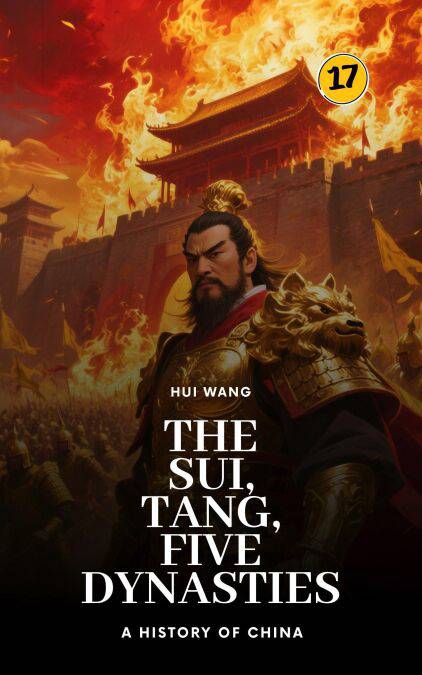
- Afhalen na 1 uur in een winkel met voorraad
- Gratis thuislevering in België vanaf € 30
- Ruim aanbod met 7 miljoen producten
- Afhalen na 1 uur in een winkel met voorraad
- Gratis thuislevering in België vanaf € 30
- Ruim aanbod met 7 miljoen producten
Omschrijving
The Sui, Tang, Five Dynasties: A History of China, PART THREE, takes you on an unforgettable journey through some of the most electrifying centuries in China's past — a time when loyalty could hold an empire together, and a single act of betrayal could bring it to its knees overnight. I wrote this book to peel back the dates and dynastic charts and reveal the human drama underneath: the real people who fought, ruled, schemed, and dreamed during the Tang dynasty's last great age. From the meteoric rise of the eunuch Li Fuguo, who could make or break emperors, to the ruinous uprising of Huang Chao that set the realm ablaze, the story unfolds like an epic that never loses its heat.
You'll watch the An Lushan Rebellion reach its bloody climax with the fall of Shi Chaoyi, and see Guo Ziyi — one of China's most brilliant generals — emerge to pull the dynasty back from the brink. You'll walk beside Emperor Dezong as he confronts betrayal, is temporarily forced to flee the capital, and then, in the uneasy calm that follows, embarks on bold attempts at reform. His courage and doubts ripple through every page, revealing an emperor who longed to rule wisely but was trapped in a world of shifting loyalties.
As you push deeper into the sweep of the Middle Tang, Emperor Xianzong's reign bursts with renewed energy — a ruler determined to restore imperial authority and curb the regional warlords who had hollowed out the throne. His campaigns scored real victories, but those hard-won gains cast long shadows: corruption and rebellion never fully vanished, and the court would later erupt into crisis that ultimately found one of its tragic climaxes in the notorious Sweet Dew Incident.
Next the stage darkens and sharpens: Emperor Wuzong arrives, austere and zealous. His reign coincided with the collapse of the Uyghur Khaganate and with aggressive domestic measures — most famously the 845 suppression of Buddhism — and he governed alongside the formidable statesman Li Deyu, whose administrative brilliance briefly gave the dynasty another flash of centralized strength.
Outside the palace, new actors remade the map. On the western frontiers Zhang Yichao rose up and reclaimed the Hexi Corridor from Tibetan control, reknitting a vital stretch of Silk Road and projecting Tang influence back into the deserts. But the peace was brittle. The storm came in the form of Huang Chao's ruinous rebellion: cities burned, Chang'an fell in 880, and Emperor Xizong was forced into a desperate western flight to safety.
From those ashes emerged names that would echo for generations — Li Keyong, the relentless Shatuo warlord whose iron will carved out a power base on the northern frontier; and Zhu Wen, the shrewd and ruthless general who, by seizing the last embers of Tang authority, would set the dynasty on its final, fatal course.
This is not just a chronicle of emperors and wars — it is a living portrait of ambition, loyalty, and loss. In The Sui, Tang, Five Dynasties: A History of China, you will meet the people who shaped a world: the dreamers who dared to remake borders, the tyrants who ruled with iron, the saviors who stitched fractured states back together, and the rebels who set the course of change. They carried a civilization through its brightest triumphs and its darkest nights; their voices still reach across the centuries, waiting for you to listen.
Specificaties
Betrokkenen
- Auteur(s):
- Uitgeverij:
Inhoud
- Taal:
- Engels
- Reeks:
Eigenschappen
- Productcode (EAN):
- 9789189998506
- Verschijningsdatum:
- 6/07/2025
- Uitvoering:
- E-book
- Formaat:
- ePub

Alleen bij Standaard Boekhandel
Beoordelingen
We publiceren alleen reviews die voldoen aan de voorwaarden voor reviews. Bekijk onze voorwaarden voor reviews.








